Cadaques
Location: Spain (Province of Girona – Catalonia)
Type of village: Permanent
Date of opening: June 9, 1962
Year of closing: 2003.
A little history: In 1960, Spain, and primarily the Costa Brava region, opened up to so-called mass tourism.
Investors and developers carried out projects that, over the years, led to the "concreting" of certain areas of the coastline to turn them into seaside resorts.
One of these investors, who had just acquired a 300-hectare plot of land near Cadaques, knocked on the door of Club Méditerranée in the autumn of 1961.
The proposed site is located in the immediate vicinity of Cape Creus, more precisely between Pla de Tudela and Cala de Culip.
The Club's reconnaissance mission discovered an isolated, hostile, wild place battered by the Pyrenean winds and sea spray. In short, it was difficult to accept, and yet...
It was Jean WEILER, the Club's architect and decorator (to whom we also owe the amphitheater, the invention of the crenellated bar, etc.) who took up the challenge. He joined forces with Pelayo MARTINEZ, an architect from Figueras, to design a village on this difficult terrain.
Even the great Salvador Dali contributed by making some sketches of his vision. The famous painter also received Gilbert TRIGANO and Gérard BLITZ at the beginning of the construction of the village; he was also present at the inauguration of the village.
They don't yet know that they are going to build one of the most legendary Club Méditerranée villages on this moor.
This is what Jean WEILER wrote at the beginning of 1962:
The Club Méditerranée Village is located approximately 6 km north of Cadaqués. The land is located on the northern slope of Cape Creus. The terrain is very steep and rocky. In winter, it is swept by strong winds from the Pyrenees. The climatic conditions have forced a change in the type of construction commonly used by Club Méditerranée, which is mainly wooden housing covered with straw.
We adopted a solid structure, rediscovering the character of the local architecture. The double room was deliberately kept to a minimum size, without water or electricity. This was for economic reasons due to the particularly steep and rocky terrain.
The club's accommodation cell is characterized by simple furnishings, good climatic insulation and good ventilation.
So for the first time, the Polynesian hut is being abandoned in favor of small, permanent dwellings of about 6 square meters, the space needed to install two beds and a wardrobe. The dwellings are grouped into small clusters of 8 to 15 that follow the lines of the land.
The project will be drawn (or modified 3 times). The final plan or site plan submitted by Jean Weiller is as follows:
"The village is planned for 1,200 people. The first phase (1962) provides for 800.
We have adopted a plan to separate the night areas – accommodation – to preserve peace and quiet, from the central and lively area and the meeting point for all the activities that will take place throughout the day.
The main road crosses an esplanade where the parking lot is located, the arrival point for vehicles. Only cars carrying club members and trucks for the restaurant will be able to use the last section to the center. The parking lot will be closed and guarded.
The infirmary is located in a small natural circle overlooking the restaurant and the esplanade leading to the sea.
The reception center consists of changing rooms, information on excursions, accommodation planning, left luggage, offices and the village director's office, passports and traffic.
This village closes on the side of the road and opens with a terrace towards the landscape and the sea. It has a portico attached to a tower: the lower part serves as a library and the upper part as a dovecote. From this platform, the final point of access to vehicles, there is access to the restaurant .
The kitchen is triangular in shape. The division of the restaurant corresponds to a new type of collective restaurant. A garden separates the two covered rooms.
Two directions to the restaurant, one facing the sea, the other facing the Eagle Rock. The restaurant is attached to a hill behind which are the bar and the dance floor, which are surrounded by terraces attached to the mountain like in ancient theaters. This floor is surrounded by a terrace, a podium for the orchestra, the sound booth, the recording studio, the booth and the backstage of the theater.
The terrace gives access to the bar, slightly removed from the entertainment area, but at the same time it is connected to it.
The bar is located halfway between the restaurant and the dance floor. On the ground, at the foot of the Eagle Rock, there is a garden, a tree plantation with ponds, and a classical music auditorium.
It is planned to create sports grounds along the small port and the artificial beach.
There are 8 or 10 toilets in the accommodation area. Toilets, open and closed showers, sinks, hairdryers, irons and light points for razors. The exterior is made of dry stone walls found in the country. For all construction, local materials, dry stone walls and stairs, tiled or flat roofs., swirled and lime-painted walls. Floors of shale and tiles.
Under the direction of Jean WEILER and Pelayo MARTINEZ, the 500 Spanish workers hired had 90 days to build the village.
Claude EYGUESIER had the difficult task of opening the village, a village barely completed on June 9, 1962.
People go to Cadaques for water sports. The village quickly became a mecca for diving (both free and scuba) to explore the underwater world and impressive drop-offs. The caïques depart from the small Culip cove, overlooked by the adjoining restaurant.
Due to the favorable wind conditions, the village is also renowned for its sailing school. Water skiing is also popular during the early years.
Did you know?
For several years, the village served as a rescue center for divers who had suffered diving accidents. The village had a hyperbaric decompression chamber. This type of equipment was very rare at the time and almost impossible to find in the region. The nearest one was located in Toulon and belonged to the army.
And today.
In 1998 the Cap Creus Natural Park was created
The village closed in 2004. The Spanish government bought the land occupied by the Club for 4.5 million euros, and, with the Catalonia region, paid out another 7 million to return the site to nature. The demolition of the village began on Monday, July 13, 2009, and lasted 3 years.
Today, the site is part of the Cap de Creus nature reserve. Some remains of the village have been preserved, as a testimony to the site's past, as well as the landing stage in "Cala Culip."
Videos
Club Med Cadaques
The DinausauresClub – Gérard Pigeon DECOSTERD
TVE 3 report on the demolition of the Club Med in Cadaques and the transformation of the site.
Club Méditerranée de Cadaques, 1970. Unknown source (extract from a Club Méditerranée commercial publication at the time?)
Fly over the Pla de Tudela like a bird. Beautiful HD images
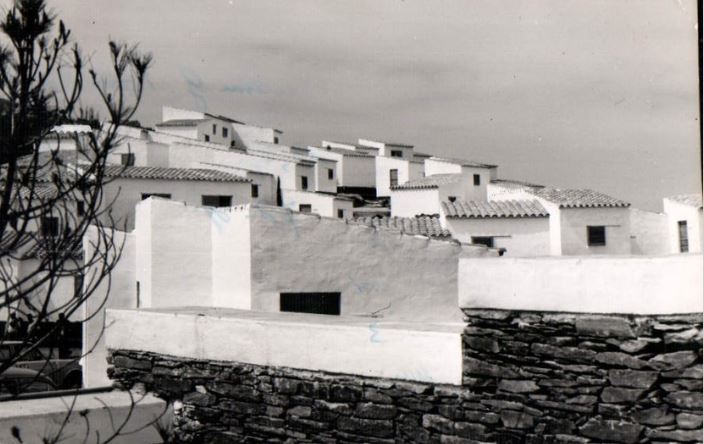
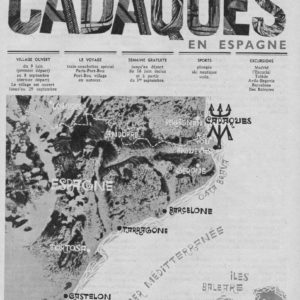
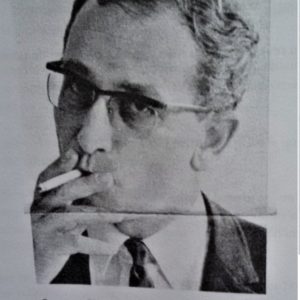


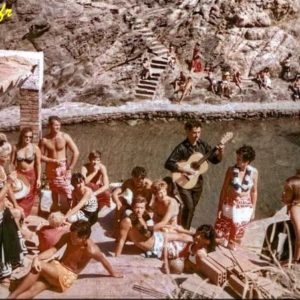


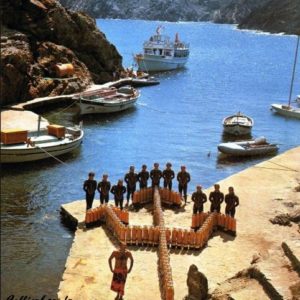
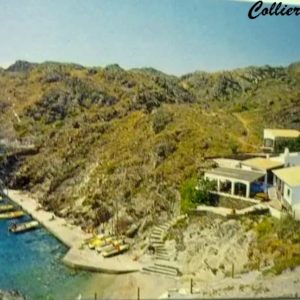


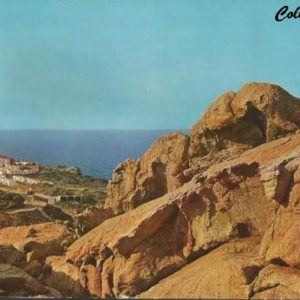
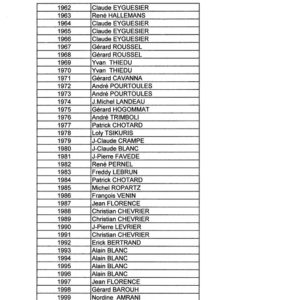


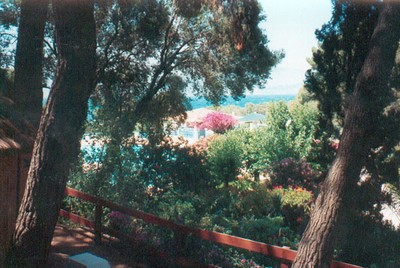
For the direction of the works, do not forget Robert Baudin. I know because I went to see him several times. He was there even before the road was built (under his direction) and we went to the site in a fishing boat. And Dali also received my father, I waited for him while fishing on the small quay in front of his house in Portlligat.
I also knew the investor mentioned in your article (well, if it is the same one...) in my memory his name was Gordon (I hope I am not mistaken) ... and I got into his car ... a Rolls-Royce (which did not fail to strike the child that I was at that time). During the construction of the road a worker unfortunately died (that is what I think I remember from what my father told me).
1985, GO Diving.
A lost wonder...
I was there in 1982 to go diving
. A dream. There was an instructor, Michel, who introduced us to "sea slugs."
Without leaving his regulator, he gave us a master class.
Thanks to him, I tracked them in all the seas where I dived.
Thank you, Michel.
Hello, this is my first trip abroad as a manager in Barcelona. The car Robert is talking about was a
Mercedes 600, that of Franco and
Antonio Van de Valle.
Also in Cadaques, Perret, singer and La Chunga,
dancer, made their debut in front of the GM and later became very great
artists. Cadaques
was the birthplace of
quite a few of the GOs
Club Med Cadaques? A fantastic holiday not far away, cheap, in an exceptional setting! A fantastic natural site, magnificent architecture of simplicity and successful integration into its site. A contact with wild, harsh, exceptional nature, to be shared with several thousand holidaymakers each year….
The natural park that now succeeds it is a desert filled with pebbles, like the entire coast. Just for the aesthetics of their perfect integration into the landscape, they could have preserved these small white kasbahs whose magnificently successful layout highlighted this relief!
The park does not attract as many visitors as its old kasbahs!
Their aesthetics were exceptional in their soberness, in their harmony with the relief and in their complete respect for local architecture.
That was over 600 jobs a year!
But ultimately, wouldn't the 5,000 annual holidaymakers, deprived of places to live, have moved to this development, as massive as it is ugly, in the wild hills of the village of Cadaques!
What have we finally gained, and what have we lost, in the suppression of this successful holiday village, which attracted thousands of tourists instead of forcing them to build elsewhere?
The buildings which now surround Cadaques are incredibly ugly, without any harmony with the relief, not even respecting the local architecture, only displaying their bad taste of nouveau riche on holiday, around an old village of character.
With absolutely no aesthetic appeal, these suburban housing developments completely degrade the surroundings of Cadaques:
And now, for a month of vacation per year and a few weekends, these holiday pavilions artificialize the ground for 500 to 1000 m² per family, instead of 12 m² at Club Med for 2 people who change every 15 days for 4 months per year, i.e. 166 times less artificialization destructive of nature!!
What is the most destructive tourist construction system for the view and the land?
And what is the system that provides the most stable 'small jobs' (those that are so needed), rather than short-term profits for a few, I wonder...
After several seasons in Cadaques as a kitchen go and so many memories and friends, I left there
one last visit to my friends, Paco, Maria Angeles, Antonio and so many others whose names escape me but not the faces and the good times spent with them.
My last visit to Cadaques left me with a taste of disappointment deep in my heart. Why destroy everything to put so many ugly things there, for profit, but Cadaques lost its wild soul for...?????
Hello, I was in Cadaqués from January to September 1969 for the refurbishment of the kitchens, the refrigerators, the high-voltage electrical system, etc. The head of the equipment department was the Swiss Rolland FABRE or FAVRE. He had brought in another Swiss who also had skills in electricity, Daniel COLLET, who was a diving instructor in Cadaqués. In the summer, I have photos and several anecdotes.
I went back to see the Cabo CREUZ Lighthouse. I remember PACO and his wife MARIA well, as well as JESUS (Rézus), the driver and handyman. Lots of good memories of this period before joining Le Manial Palace in CAIRO in EGYPT and many other adventures.
I completely agree with you.
It was a beautiful place with respect for the environment.
We are a long way from that today.
HELLO,
I still have the diving watch that you sold me in the years 1956/1960 at Palinuro (Jean Richard became Aquastar after servicing in Marseille)….
WHAT MEMORIES, Contal, JP Chesné, Serge Andrieux, Jacques Masson, ….
WHAT A TIME.
FRIENDSHIPS from a more than octogenarian.
Richard Rybinski
Wow José Brotons we dove together between 62 opening village Claude Eyguesier and 63 64 65 66 67
What memories Masson Roussel …
Gérard Rubinski
Hi my brother
, nice comment, see you
soon
Bar manager in 89, the centenary year of the Revolution... we didn't sleep much that season!
Hello, I was in Cadaqués from January to September 1969 for the refurbishment of the kitchens, the refrigerators, the high-voltage electrical system, etc. The head of the equipment department was the Swiss Rolland FABRE or FAVRE. He had brought in another Swiss who also had skills in electricity, Daniel COLLET, who was a diving instructor in Cadaqués. In the summer, I have photos and several anecdotes.
I went back to see the Cabo CREUZ Lighthouse. I remember PACO and his wife MARIA well, as well as JESUS (Rézus), the driver and handyman. Lots of good memories of this period before joining Le Manial Palace in CAIRO in EGYPT and many other adventures.
MICHEL
There were a few of us divers who met regularly in June and September, benefiting
from off-season prices, and we ended up forming a small club which then met up for a Red Sea trip
organized by a Parisian
repeated underwater
hunting competitions The very basic accommodation was -late- equipped with pale lighting and they were given a
particular name that I have forgotten ????
For the plans and the realization, there is above all Claude Brizay, formerly of ENSAD who signed the plans of the Club Med of Cadaquès…
GO in 1995. Probably my best summer. The place was magical.
We must have crossed paths there, one of the best vacation weeks of my life! This article is heartbreaking...
Hello everyone. I was a GO of free diving, snorkeling and spear fishing in the summer of 1967 at Club Med Cadaquez. I was the only American. I had studied at Sciences Pol in Paris from Sept 1966 to May 1967 and swam on the Univ of Paris swim team.
My fellow GO's of free-diving were Jean-Jacques and Henri. We were together all day every day. I have wonderful unique memories of that summer. The casitas where we lived, the diving trips, the overnights on the beach, cooking lamb and making sangria and singing around the campfire on the beach. An afternoon visit to Salvador Dali's home where we met him and his wife Gala and some lovely girls who were his muses. I met Gerard Blitz and Serge Triganon who asked me to join the Club Med team, but I had to finish my last year at my college in Connecticut. But I have wonderful memories of a unique village and adventures.
Harrison Knight
Hello Harrisson
I am Jean Jacques 's sister and I was in Cadaques at this time
I remember you
my brother Jean Jacques died in 1998
i live for a long time near Spanish boarder and i met Henri at numerous times in Perpignan
sincerely yours
Raymonde
1979 what a magnificent year for diving, the center manager was Jean Michel Couttet, the divers, Jean Dénis Deberles, Serge called the Viking, Gilles Bouchez called the poet, Thierry Botto, Vincent, Dominique the tank inflator, Bernard Jarry the seducer, Bill Chenz the photographer of Ara Kiri, Jacques Burri myself, Christian Golvec called the gaffe and many others whose names I have forgotten. There was Rocé the commander of the Illa and his son, Miguel a wonderful sailor, what beautiful and good memories. This year, I would like to relive it so much joy this club brought me. Tomorrow I will attach to you if the comment accepts the photo where all the people located are in diving gear on the Illa. To all those I was able to make dive and who remember me all my friendship, 1979 was a superb year for diving in Cadaques. La Gaffe.
I was also there in June 79 where my father sent me for my first contact with Club Med and my first dives in the sea. It was great, indeed, for the 19-year-old kid that I was. Thank you all.
Too bad indeed about the demolition.
HURP GO. Two seasons
– Restaurant manager CULIPE. Village chief. Gérard Roussel
– Assistant to Yvan Thiédu, village chief
I was in the Club Med at Cadaques with a friend, booked at Longwy (France)
1979, the little bungalows had a name, our key, and we spent one week there! It was a nice week there and RIP for Dany Mergen was there too Greetings from Luxembourg Ady Weber